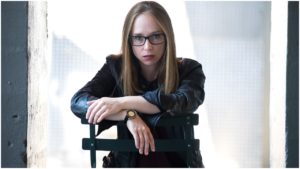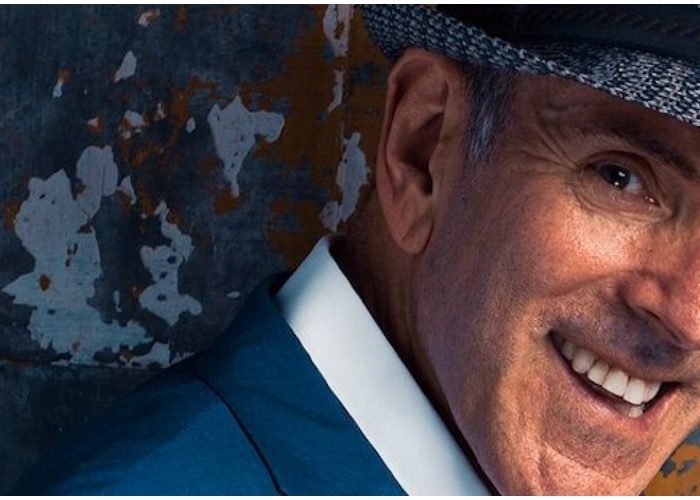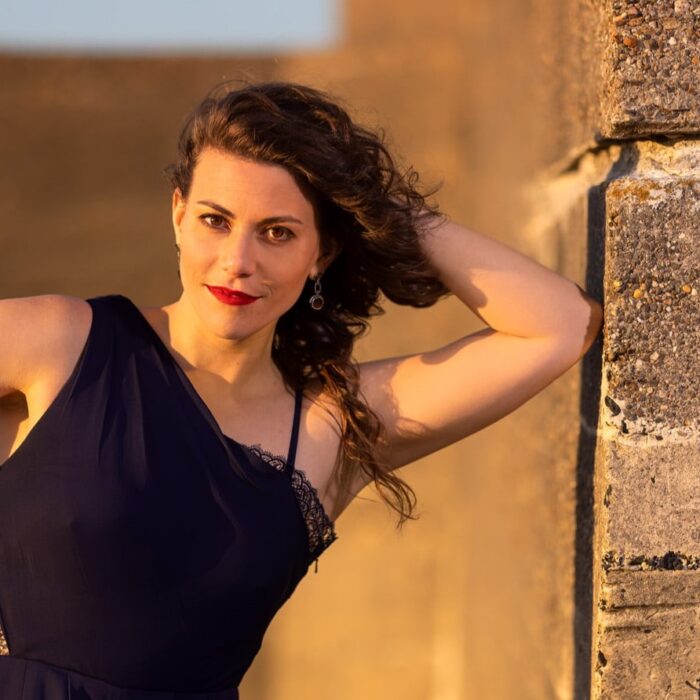
Q & A: Director Jennifer Williams On Her Unique Style & The Future of Opera
By David SalazarJennifer Williams started off her own artistic career as a composer. But soon enough she found that her voice could only come to full fruition as a director.
With a Ph. D. from Cornell University, as well as degrees from the University of Cincinnati College-Conservatory of Music and the University of Chicago, she quickly built up a career in both Germany and the United States. She has directed at such noted theaters as the San Francisco Opera Merola Opera Program, Pittsburgh Opera, Center for Contemporary Opera, Miami Music Festival, Austin Opera, and DC Public Opera, of which she is the founding Artistic Director, offering up unique productions that not only utilize new technology, but establish unique settings for operatic cornerstones.
Additionally, she has worked as an assistant and associate director under such operatic households as Francesca Zambello, Paul Curran, David Alden, and Sir Thomas Allen, among others.
OperaWire recently had a chance to talk to the director about her career, her style, and how she views the future of opera.
OperaWire: As an opera director, what do you see as the key to help propel this art form forward as it evolves in the 21st century?
Jennifer Williams: I’ve worked in the US and Germany, and companies in both countries approach opera very differently. I think there is a shift in how directors and companies are thinking about our relationship to our audience. About the importance of storytelling and what it means to make opera accessible. I think we have reached a crossroads about what “accessible” means.
OW: How so?
JW: For a long time it meant updating productions. I think that’s fine, but I think there are more ways to making stories relevant to modern audiences besides setting a production in our present day and just stopping there. My mission is to put opera in conversation with our contemporary world – which sometimes means setting stories in the present day, but also means engaging with technology like video projections in new and inventive ways, experimenting with design techniques like immersive and site-specific work, and finding other ways to play with audiences’ expectations and to bring ideas into the 21st century. Conversely, you can make a period production relevant as well. Especially in the context of #MeToo and other critical conversations we are having at this moment, directors are now challenged to tap into the hard questions that are embedded in these great operas. Mozart and Da Ponte’s operas are about abuses of power, class conflict and sexual politics, and many audiences want to hear stories that focus on those themes rather than a rom-com approach to “The Marriage of Figaro.”
OW: Speaking of relationships to audiences, how do we bridge the gaps between differing generations and their different attitudes and understandings of what opera is?
JW: All generations, certainly including my own generation, want to experience the immediacy of live performance – they want to experience an empathetic connection with a dynamic character taking risks, being vulnerable, being brave enough to change. Opera is about exploring the depths and complexities of the human condition, and for that reason it must start with the performer and the story they are telling through music and drama. A great production design is an extension of the performer – it amplifies them and their story in a visual register. It has to be inextricably bound to everything they are doing, saying and feeling. When a production – period or modern – loses track of this, the audience is lost. Regardless of the generation.
In terms of bringing in new audiences, it’s critical now to shift the conversation away from making opera accessible towards making opera inclusive. Making an opera production “accessible” implies that new audience members lack the ability to grasp the story without a director simplifying it for them, and this is the very attitude that pushes potential audience members away. To my mind, an inclusive production is one that reflects and engages with the diverse perspectives present in our world. Such as better representation in casting and storytelling as well as meaningful engagement with global politics and cultural conversations. I want every person in the audience to feel connected with the characters and see a piece of themselves in the story being told. A director’s job is to distill drama to its most dynamic conflict, put the story in conversation with our world and leave the audience asking questions they were not asking before. That is the transformative power of opera: the possible encounters the impossible, challenging our assumptions about what our reality could be like. That is the gateway to change – empathy and imagination.
OW: You recently directed the world premiere of “Backwards from Winter” in New York produced by Center for Contemporary Opera, which is a monodrama. What are the particular challenges of taking on a project like that as a director?
JW: The big challenge is being very precise in identifying what the central dramatic conflict is and how to bring it out of that person. While on a level that is true when you direct anything, it becomes more complicated in a monodrama because you have to pull an element of that character out onto the stage in some way. That direction can perhaps be more abstract or expressive, but in an interesting and visceral way. One temptation for this piece is to create a husband character, which is not part of the work at all. We just know that the soprano character, who is unnamed, has lost a person she loves with all her being, and is battling grief. Other directors have used projections as his living presence or used a dancer to portray that character. It’s a valid approach and way to create conflict. But there are ways to keep the focus on the female character and create conflict within her that is visible onstage.
So, I decided to tell a story about a woman battling grief who is looking for avenues towards hope. Grief is a character onstage. It is a modern take on classical theater, Shakespeare, and Greek drama. In my production, Grief takes the form of the electric cellist. In Douglas Knehans’ score and Juanita Rockwell’s libretto, the electric cellist repeats fragments of her text as a character. I gave the electric cellist an identity but one that is an extension or part of the central female character.
It also renders the production more inclusive by not forcing a gender identity on the unnamed, absent lover and assuming that the lover must be male. The openness of the story is beautiful, and I wanted to keep that intact, especially for the world premiere. These kinds of assumptions generate many of the negative so-called “traditions” opera is burdened with. We press stereotypes on characters that aren’t necessarily part of the story because they reflect assumptions – including ones that persist in our present day. They often have little to do with the works themselves. And for older works, the tired argument that such cultural biases simply reflect the composer’s time is problematic; if we choose to put them onstage unchallenged, they reflect ours. Certainly the great composers and librettists often fall short of the legacies we have built for them, but sometimes they were more progressive than we give them credit for.
OW: You have worked with a number of major directors throughout your career. Who is one director that has inspired you and what did you learn from him or her?
JW: The first person that comes to mind would be Francesca Zambello. ‘Cesca is a director who is genuinely interested in her audience. She transforms opera into an opportunity to connect with the community. Her work inspired me to shift my attention to opera. Initially I wanted nothing to do with opera – I was put off by the kind of storytelling it is often burdened with. This trope of the dying soprano, I found very off-putting. The constant victimization of women bothered me, and the reliance on racist stereotypes. I associated it with dusty, dated designs and acting. I am interested in history and nuances of period but encountered many period productions that were unimaginative, generalized the period and seemed disinterested in putting history in a meaningful conversation with the present day. And of course the homogenous pool of opera directors. If it were not for Francesca Zambello, I would not have pursued a career as an opera director.
As I was preparing for a career directing theater, I came across photos of ‘Cesca’s production for “The Little Prince.” I had no idea that an opera production could be so imaginative and that opera could be this exciting, dynamic, and immediate – that it could capture the human spirit in such a genuine and beautiful way. It indicated that the sky was the limit in this artform, when in the right hands. And digging deeper, I found that there were interesting and modern questions at the core of these stories. And many of the new works being written now take on very pressing, controversial questions that are critical to our present moment. Oftentimes when one digs deeper into the scores, the portrayal of women is actually quite empowering. Mimì, for example, is not disempowered. Nothing in Puccini’s music disempowers her. In terms of her story, she makes a choice to die on her own terms. That’s a brave and powerful choice. It comes down to the director and her collaborators as to how the story is told.
OW: You work heavily with video projections in many recent productions. Where did this interest come from?
JW: I love to incorporate new technology in my work and play with audience expectations — at the moment my focus is on video projection. While projections as a theatrical design element are not new – Bertolt Brecht used projections coming up on a century ago – and both still and video projections have been a part of the design landscape for a while, what is new is the changing role of video in our increasingly digital world and its relationship with the human condition. I feel that we interact with screens so much in modern society, and so I try to explore the middle ground between staring at a screen by yourself on one hand, and on the other sitting in a theater surrounded by others, watching a live production. I think there’s much to explore in the intersection between these two poles.
OW: What are the greatest challenges of implementing projection into an opera? How does it further the immersion for the audience?
JW: To my mind, a challenge is to move away from the pattern that projections are a means to provide cheap scenery, or something flashy that ultimately upstages singers. Video can be deeply psychological, an extension of a character that elucidates their inner thoughts. In my production of “Backwards from Winter,” video projection was an extension of the unnamed woman’s emotional process – it gave her voice validity and made the story truly about her by immersing the audience in her memory and imagination. Video design can also augment the storytelling with another visual element that creates a different set of expectations. In the new production of “A Midsummer Night’s Dream” I just directed at Miami Music Festival, video projections played the role of the flower’s magic: they add a supernatural element that overturns the rules of the material world. As this kind of technology becomes increasingly entwined with the human condition, I think it’s important to bring this conversation onto the operatic stage – not as a gimmick but to put opera into conversation with our contemporary world, and as a means of connecting more deeply with characters in new and dynamic ways.
OW: You are also very involved in working outside the traditional opera house space. What are the challenges of placing operas in specific settings? What are the greatest benefits? What are some dreams you may have for this kind of approach?
JW: Bringing opera outside of the opera house and into vibrant public spaces is a great way to meet new audiences halfway and make a very literal case that opera has a place in our modern world. Opera has a long history of exclusivity, and it’s important to acknowledge that and work against it. The challenge is to thoughtfully use the alternative space as an active design element. It’s tempting to essentially construct a theater in the found space so you have all the bells and whistles you are used to having in a traditional theater. I think it’s exciting to take on a guerrilla theater approach, thinking outside the box and pushing yourself outside your comfort zone. Audiences are more willing to meet you there than I think many artists realize. In the site-specific, immersive installations I have directed, I aim to take this to the next level by putting the story of the opera in conversation with the story of the space. These have included “Don Giovanni” at The Mayflower Hotel; “The Turn of the Screw” in a haunted house built the same year the novella was published (this featured an aerialist-soprano as Miss Jessel who sang the role of the ghost from a trapeze rigged in the space); a Warhol-inspired “Così fan tutte” at the Torpedo Factory Art Center on the waterfront; “La Bohème” in Eastern Market, a 19th-century market still in active use today; and a fully-staged production of Schubert’s Goethe-Lieder staged in the round at The Austrian Cultural Forum. Putting opera in conversation with the community in this way creates meaningful connections. The opera’s story and the community’s history become intertwined in exciting and powerful ways. It’s an adventurous approach to storytelling that is deeply important to me. Most of these installations have been in Washington, DC with the experimental opera company I founded, DC Public Opera, which focuses on immersive and site-specific opera. I am eager to partner with other companies interested in taking on this kind of work, including through co-productions and remounts as well as new work, as a way to connect different communities and bring them into conversation.
OW: What are some of your favorite operas that you would love to direct?
JW: Where to begin! Contemporary opera is my passion – telling a story that has its finger on the heartbeat of our time. I love collaborating with composers, perhaps because composition was my gateway into directing. I enjoy being a part of the conversation, to be involved on a dramaturgical level. My first love was the viola, so 20th and 21st-century musical styles deeply resonate with me. On the other end of the timeline, Handel’s “Alcina” is at the top of the list. It is an interesting opera because there are two contrasting portrayals of femininity and empowered women in that opera. For me as a director, it is great to put an older work like that in conversation with our modern world. There are really interesting themes about what it means to be a woman in power and how to approach magic throughout our contemporary lens. I love the operas of Mozart. I think his works are very relevant to our present day and have pressing themes at their core, such as abuses of power and sexual politics, that are great conversation starters for our present moment. “La Clemenza di Tito” is an opera I would love to direct soon as well.
My next new production is a double bill of Gustav Holst’s “Savitri” and John Blow’s “Venus and Adonis,” produced by New York’s immersive opera company, New Camerata Opera. My thoughts on inclusive casting led to a great conversation about other opportunities for inclusivity in both the operas. It’s so fulfilling to work with companies like New Camerata Opera that are committed to making opera inclusive. I am looking forward to developing an immersive production at The Flea Theater and exploring immersive video projection design.


